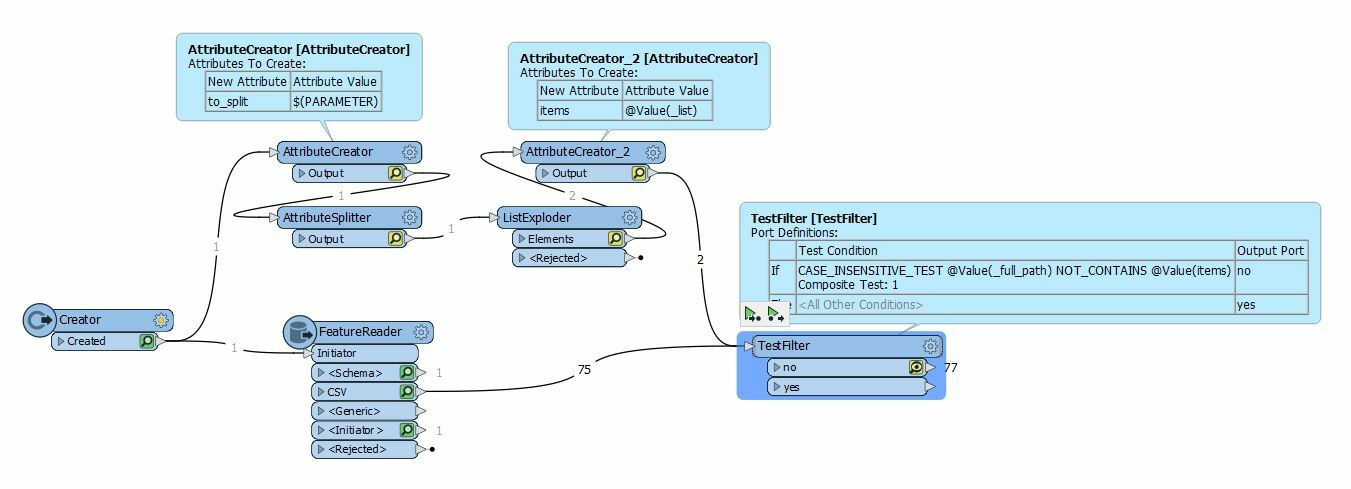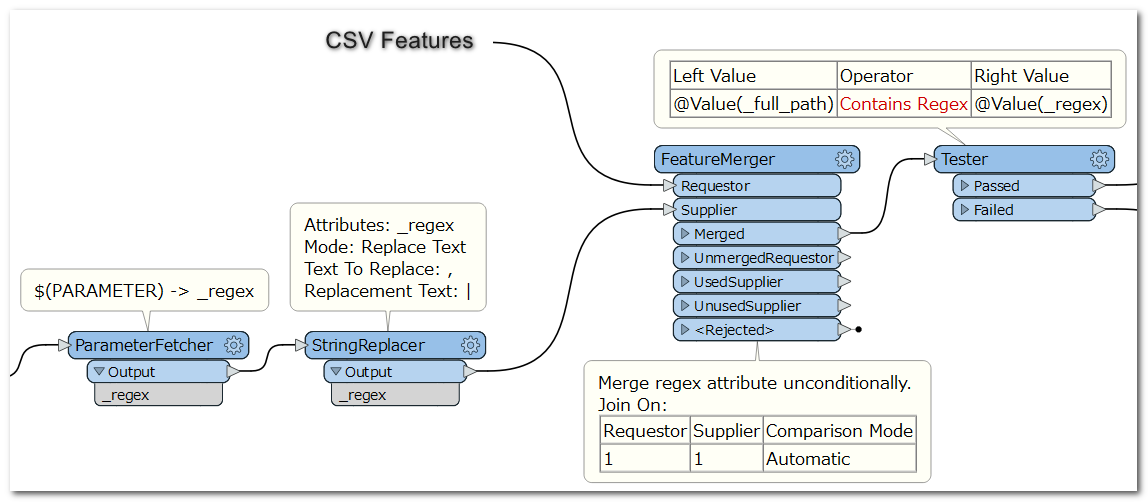I have a user parameter getting a string of comma separated words. I would like to use that as items/arguments to filter whether or not a feature attribute contain one of those words.
It would be to be used on about 10,000 features eventually with maybe up to 5 different words
I can get the user parameter to a list, and then to an attribute, but I can't find a way to use those to filter my dataset, either using Like, In, or Contains
Any idea how this can be done?
It's basically to filter whether a path does or not contain some words

Best answer by takashi
View original




